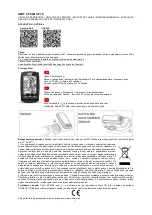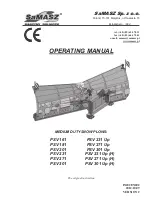
User’s & Technical Manual –
ANALOG LIQUID LEVEL SENSOR ALLS6000
GELEC
Industrial Electronics
PAGE
16
10.
OPERATING PHILOSOPHY
–
LEVEL DESCRIPTION
The ALLS6000 operating philosophy is based on a desirable
working region and four
critical
liquid levels (fig. 14), which can be
calibrated from the user to meet his application needs. The levels
and their functionality are described below.
(HL) High Level
It is the highest level the user can select with the potentiometer. You can set this level
following the calibration process.
If the (HL) is modified through the calibration process, the (LL) and the (DL) must also be
modified.
(LL) Low Level
It is the lowest level the user can select with the potentiometer. You can set this level
following the calibration process.
If the (LL) is modified with the calibration process, it is essential for the (DL) also to be
modified to the desirable level.
Working region
It is the desirable region which the liquid level fluctuates, either in
FILLING
or
DRAINING
mode. The working region is between (TL) and (DL), which are can also be calibrated.
(TL) Target Level
It is the desirable level and it can be selected by using the potentiometer
’s 0..100
scale.
At the (TL), the relay changes status, and the liquid falls back to the Differential Level
(DL). Notice that the
0...100
scale refers to the percentage of the High Level (HL).
Therefore the value that the arrow is pointing, is the desirable (TL), but as a percentage
of the (HL) and not as an absolute value.
(DL) Differential Level
It is the level which the liquid returns to, after reaching the (TL) and also where the relay
changes its status. (DL) is always lower than the (TL) (pre-selected value
50%(TL)
) and the
user can modify it with the calibration process. It is not essential to modify the other
levels after calibrating (DL).
fig. 14













































